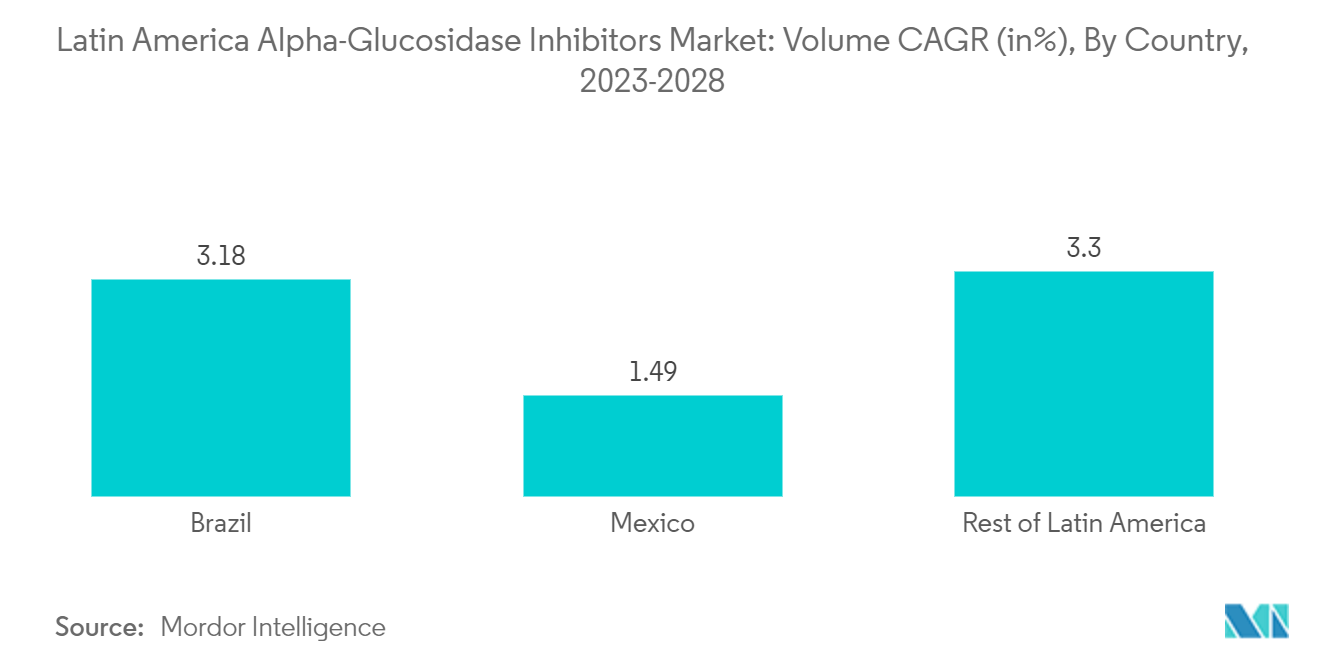Market Trends of Latin America Alpha-Glucosidase Inhibitors Industry
Rising Diabetes Prevalence in Latin America Region
In Latin America, the incidence of type 1 diabetes ranges from 0.4 to 8.3 cases per 100,000 children under the age of 15, and the prevalence of type 2 diabetes ranges from 1.2% to 8%, with higher prevalence rates in urban areas. Diabetes is expected to increase by 38% in Latin America over the next decade, compared to a 14% increase in the population. By 2025, the total number of diabetes cases is expected to more than double and surpass the number of cases.
Factors contributing to this increase include population aging and increased life expectancy, urbanization, and lifestyle changes among Native American populations. Diabetes treatment is available to only a minority of people in many places. Furthermore, type 2 diabetes is frequently diagnosed late in the disease's progression, resulting in 10-40% of patients having chronic complications at the time of diagnosis. Hospital costs account for most direct treatment costs, and diabetes mortality has increased significantly in some areas over the last two decades.
Therefore, the studied market's growth is anticipated in the Latin America Region due to the factors above.

Brazil is Expected to Dominate the Latin America Alpha-Glucosidase Inhibitors Market.
Among the Latin American countries, Brazil dominates around 79% of the total Latin America Alpha-Glucosidase Inhibitors Market. This is mainly due to the high diabetes prevalence in the country. In Brazil, the Brazilian health system is managed by each state and local health secretariat and is governed by the MOH. Furthermore, in many towns where the public sector cannot meet people's requirements, partnerships with private organizations have been put in place to increase access to PHC. The Brazilian health system in Brazil provides coverage to medicines through several programs that include a 20% expanded access to essential medicines. Brazil offers an extensive free immunization program. Brazil faced numerous lawsuits over the last 20 years, demanding the coverage of high-cost drugs to treat diabetes and certain rare or low-prevalence diseases.
According to Universal Health Coverage 2022, The four nations, including Argentina, Brazil, Colombia, and Mexico, achieved an overall index of essential coverage of 76-77 percent, with households spending less than 25 percent of their income on health care and expanding access to primary healthcare systems and coverage for noncommunicable illnesses enhanced service coverage, while a rise in the number of qualified healthcare personnel enabled community outreach.
AGIs effectively improve the metabolic profile and potentially lower the risk of long-term hyperglycemia complications in patients with type 2 diabetes mellitus. They can be used alone or with other antihyperglycemic medications and insulin. They have no links to any serious negative consequences. This makes them especially useful for patients with renal, cardiorespiratory, or liver issues, who are at a higher risk of developing lactic acidosis and thus are not good candidates for metformin therapy. They also do not cause hypoglycemia, making them a viable alternative to sulfonylureas, which are frequently associated with hypoglycemia. Patients should be counseled on maintaining an appropriate diet, as a high carbohydrate diet can exacerbate gastrointestinal side effects. If used with other anti-diabetic medications, the patient should keep glucose on hand to quickly reverse hypoglycemia. Type 2 diabetes mellitus management necessitates an interdisciplinary approach; the primary care provider, pharmacist, and nurse practitioner should educate patients about side effects and how to maintain an appropriately healthy diet.
The market is expected to grow during the forecast period due to the factors above.


